ELECTRIC, WITH AN EDGE
Transformers are important equipment in power systems.
According to different insulating media, they are usually divided into liquid-immersed transformers, dry type transformer, gas transformers, etc.
In application places with voltage levels of 35k V and below that go deep into load centers or have special requirements for fire protection, flame-retardant and maintenance-free dry-type transformers have become the first choice for users.
This article will describe in detail:
what is a dry-type transformer?
What are the main types of dry-type transformers?
What are the specifications of dry-type transformers?
. . . . . .
If you need to purchase dry-type transformers, you can contact DAELIM. Daelim has more than 15 years of experience in transformer production and sales. Can provide the most professional assistance for your transformer procurement project.
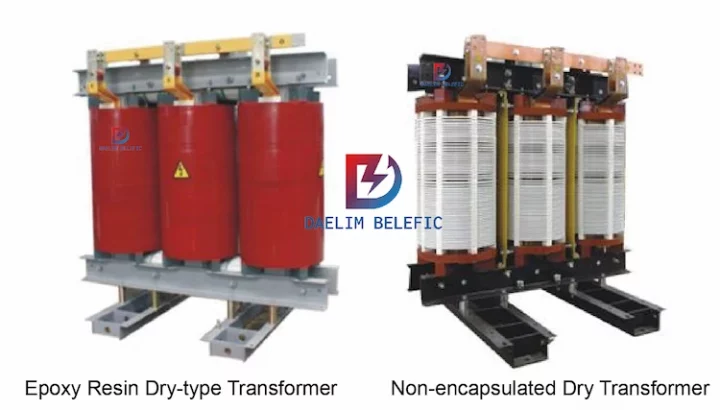
Dry-type transformers are widely used in power systems. Because dry-type transformers have the characteristics of simple structure, convenient maintenance, long life, high reliability, high flame retardancy, etc.
The workload of maintenance and repair during operation is greatly reduced. At the same time, they can be installed in the load center.
Pay attention to and promote. Dry-type transformers are transformers in which the core and windings are not immersed in an insulating liquid.
It can be divided into dry-type transformers with encapsulated windings, that is, dry-type transformers with one or more windings encapsulated with solid insulation;
Dry-type transformers with non-encapsulated windings, which means no windings are encapsulated with solid insulation Of dry-type transformers.
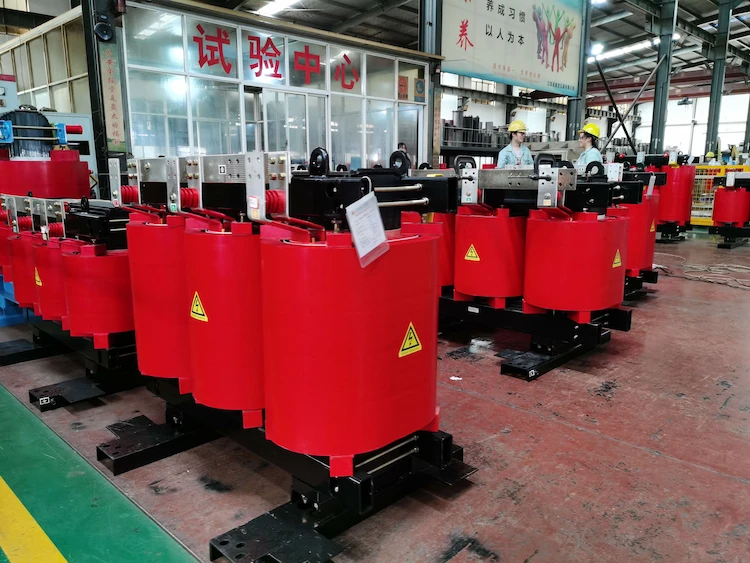
The main advantages of dry-type transformers are as follows:
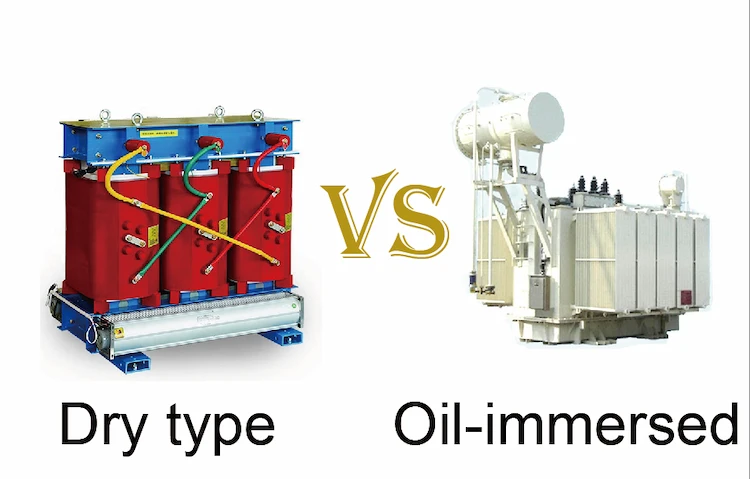
Through a more comprehensive comparison and analysis of oil-immersed transformers and dry-type transformers, dry-type transformers have the following advantages compared with oil-immersed transformers:
In addition, dry-type transformers also have low noise, fire protection, small size, lightweight, convenient installation, small partial discharge (usually below 10PC), strong resistance to sudden short circuits, low operation and maintenance management fees, and service life of up to 30 years And other comprehensive technical and economic performance.
1) Since the dry-type transformer does not need cooling oil, its operating temperature must be closely monitored and controlled to ensure the safe and normal operation of the transformer.
The temperature controller is usually used to monitor and display the temperature of its iron core and winding in real-time.
2) During normal operation, the transformer is cooled by natural air to maintain temperature balance.
When the temperature exceeds a certain limit, the fan is started to perform forced air cooling to ensure the continuous and safe operation of the transformer.
3) The temperature controller of the dry-type transformer must have two power supplies, and the two power supplies must not be drawn from the transformer to be protected.
This is to ensure that when one power supply fails, the transformer can be detected or the monitoring data saved, which is convenient Look for the fault.
In addition, the current and voltage of the transformer should be monitored in real-time, and corresponding current and voltage protection devices should be equipped.
When the current or voltage exceeds its limit, the protection device can cut off the power supply and make the transformer out of operation to ensure the safety of the transformer.
In the current world dry-type transformer market, there are two types of cast resin dry type transformers (CRDT) represented by Europe and varnished dry-type transformers (OVD T) represented by the United States.
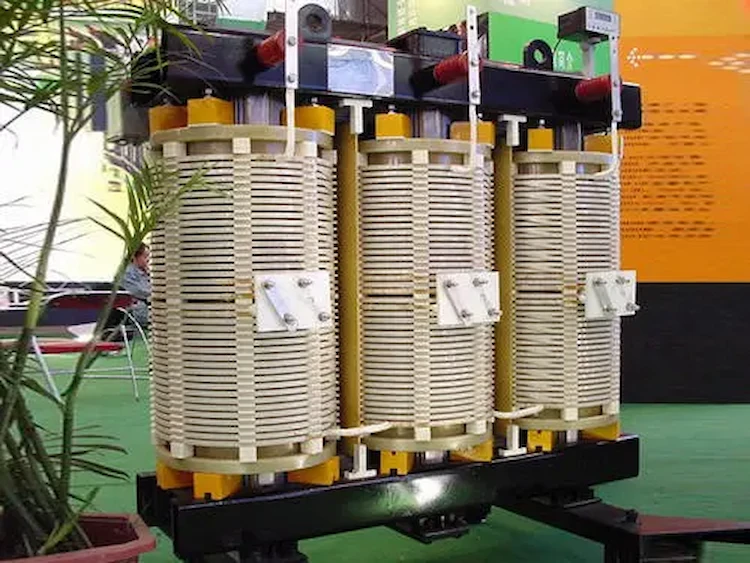
The wire of the impregnated dry-type transformer is covered with glass fiber, and the spacer is formed by hot pressing with corresponding insulating material. It is mostly used in hydropower stations and high-rise buildings with good fire resistance.
Due to the difference of dipping varnish, transformer insulation is divided into B, F, H and C grades.
Main and longitudinal insulation (main insulation is the insulation between windings and windings and between windings and cores. Longitudinal insulation refers to the insulation between different points and parts of transformer windings with different potentials, mainly including winding turns and layers And the insulation performance between the segments.) The air channels are all with air as the insulating medium.
Such dry-type transformers are more affected by the environment than resin-type dry-type transformers, and their appearance and weight are also larger.
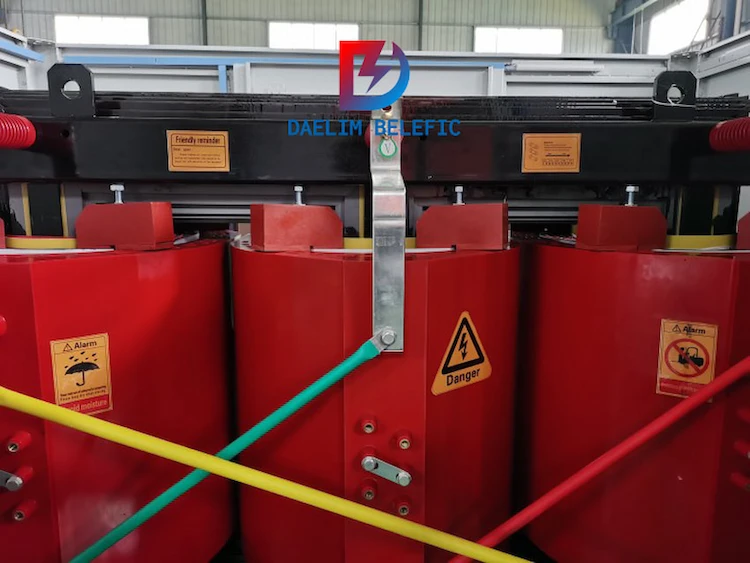
The current market mainly uses vacuum Cast Resin Dry Type Transformers. The leading products currently representing today’s cast resin transformers can be divided into the following three categories.
The first type, referred to as wire-wound cast-type transformer, is the high voltage is the wire-wound breaking cylinder casting type, and the low-voltage is the wire-wound cylinder (or segmented cylinder) casting type; the casting is no filler casting.
The second type, referred to as foil-wound casting transformer, its a high voltage is segmented foil-wound casting type, and low voltage is a copper foil (or aluminum foil) winding type; casting is filled with filler.
The third type, high pressure is the wire-wound segmented cylinder casting type, low pressure is the copper foil (or aluminum foil) winding type; the casting is no filler casting.

According to the definition of “active compound” in IEC 60455-1, epoxy resin active compound is a type of epoxy resin that also contains other active components such as hardeners, catalysts, inhibitors, or active diluents, and contains or Casting resin mixture without fillers and certain additives.
The active compound does not contain inert solvents, and theoretically, no volatile matter escapes during curing.
The materials that can be used for the casting of dry-type transformers usually include polyester resin active compound and epoxy resin active compound.
The electrical and mechanical properties of these two resin active compounds are not much different, but the volume shrinkage rate of the two after curing But there is a big difference.
The shrinkage rate of the polyester resin active compound after curing is significantly greater than that of the epoxy resin active compound, and the residual stress is also larger, which is prone to cracking.
In addition, from the perspective of reducing partial discharges, due to the strong adhesion of the epoxy resin to the wires, under reasonable process conditions, the integrity of the cured product is not easy to produce voids, which can reduce the possibility of partial discharge.
Therefore, the resin-cast insulating dry-type transformer, which currently accounts for about 80% of the dry-type transformer market, widely uses epoxy resin active compound, and the transformer produced with it is called the SC-type dry-type transformer.
The epoxy resin active compound for SC dry-type transformers must meet the production requirements of SC dry-type transformers in terms of product performance and casting processability.
As far as product performance is concerned, the selected casting material must fully exceed the specification requirements for filler-free epoxy resin composites and quartz-filled epoxy resin composites formulated by the IEC International Electrotechnical Commission and have excellent electrical, mechanical, and resistance properties. Combustion performance and the insulation and heat resistance level is required to reach F level or higher. See Table 5 for specific requirements.
As far as processability is concerned, it is mainly required that under certain process conditions, the active compound has high fluidity, easy leaching, and applicability, that is, the pouring time of the active compound can be controlled under certain conditions.
At present, the components of the active compound (filler-free type) used for the casting of SC dry-type transformer windings are epoxy resin, curing agent, toughening agent, accelerator, color paste, and other materials.
This kind of active compound has very strict requirements on the material properties of epoxy resin, such as requiring low organic and inorganic chlorine content.
At present, the epoxy resins used for casting SC dry-type transformer windings are basically high-purity medium-low viscosity liquid bisphenol A epoxy resins, and the curing agents used are basically low-viscosity, low-volatile Structured methyl tetrahydro (or hexahydro) phthalic anhydride, there are two main types of tougheners used: one type is side-chain epoxy resin; the other type is polyol compounds, which must perform under high-temperature conditions Stable, and its own viscosity should be small, in order to facilitate infiltration, diffusion, and adsorption.
Another epoxy resin active compound used in the production of SC dry-type transformers is an epoxy resin active compound containing quartz filler.
There is another kind of epoxy resin active compound which is epoxy impregnated resin without filler, used to produce resin impregnated glass filament wound dry-type transformer.
Its requirements for epoxy resin active compound are basically the same as those of the aforementioned SC type dry-type transformer. same.
This dry-type transformer has the characteristics of high mechanical strength, strong ability to withstand sudden short circuits, never cracking, strong overload capacity, etc., and its performance is significantly better than other types of dry-type transformers, and it has a trend toward large capacity and high voltage levels.
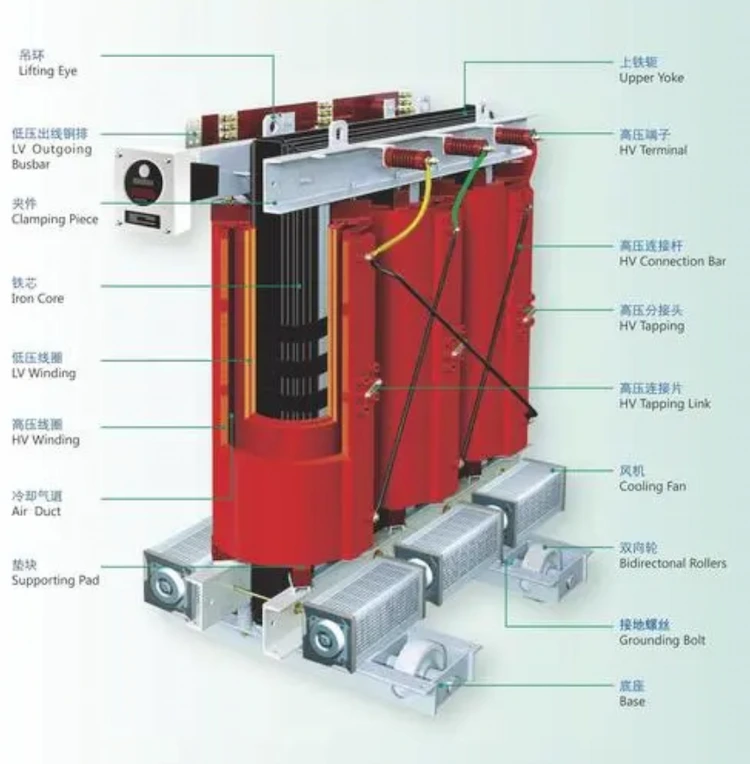
Epoxy cast resin type transformer (hereinafter referred to as dry-type transformers) are currently the most widely used types of dry-type transformers. They are divided into two types: vacuum casting with filler and vacuum casting without filler.
Both white billet windings are wound with F-class or H-class enameled, glass filament or film-wrapped electromagnetic wire.
During the winding process, the filled windings use an epoxy glass grid as the main filling framework for the inner and outer insulation, interlayer, and section, and the windings without filler use glass fiber cloth, glass fiber mat, or non-woven fabric, which is easy to penetrate Inorganic fiber materials are used as fillers.
After the winding is completed, special vacuum casting equipment is used to mix liquid resin, curing agent, etc., into the winding in a vacuum environment to keep no air gap in the winding after casting.
The casted winding is cured and molded in an oven with a special curing temperature curve, and finally forms an integral thermoset winding with excellent electrical performance and high mechanical strength.
Epoxy cast resin type transformer is mainly used for power distribution equipment with a rated frequency of 50Hz and a voltage level of 10kV.
It is the key equipment for transmission and utilization of electrical energy between the power grid and power users, and important power equipment in various fields of the national economy and national life.
The Cast Resin Type Transformer seals the high-voltage winding conductor in a thermosetting, high-temperature-resistant epoxy resin.
The use of vacuum casting eliminates the air gap inside the high-voltage winding, avoids the occurrence of partial discharge, and also avoids the possibility of external environment and impact on the internal conductor of the winding.
Cast Resin Type Transformer has good electrical properties and mechanical strength. After curing, its breakdown field strength can reach 16~22k V/mm, and its yield strength can reach 130~150MPa.
Therefore, Cast Resin Type Transformer is widely used in power systems with its high reliability and environmental adaptability.
Epoxy Cast Resin Dry-type Transformer is mainly composed of electromagnetic materials, copper and aluminum materials, insulating materials and epoxy resin materials.
As a kind of flame-retardant, fireproof and easy to recycle material, epoxy resin has greatly accelerated the development of dry-type transformers.
As a more mature way of pouring windings of dry-type transformers, epoxy resin casting process has been widely used in the development of dry-type transformers.
The casting material used in the epoxy Cast Resin Dry-type Transformer, epoxy resin, is a polymer material with a reactive epoxy group and a molecular weight of hundreds to thousands.
Cast Resin Dry-type Transformer has good electrical and mechanical properties, and good bonding performance. It has an irreplaceable position in the casting of dry-type transformers.
In the manufacturing process of this type of dry type transformer, the manufacturing process of the epoxy Cast Resin Dry-type Transformer and the corresponding process are considered, as shown in Table 1 below.
| Epoxy Cast Resin Dry-type Transformer manufacturing process | Manufacturing process |
| Organic materials used in winding coils | Epoxy resin casting material, DMD insulation paper |
| Inorganic materials used for winding coils | Quartz material, glass fiber |
| Winding coil insulation pouring method | Vacuum casting epoxy resin |
| Winding coil fixed line | Mold curing |
| Iron core anti-rust | Epoxy resin |
It can be seen from the above table that the epoxy Cast Resin Dry-type Transformer is manufactured to minimize the hazard to the environment. The epoxy resin used not only meets environmental protection requirements, but also continues to expand in the application of electrical equipment. While having a good market, there are many advantages when applied to dry-type transformers, which are summarized as follows:
1) Using epoxy resin as a casting material to connect coils and insulating materials into a whole can ensure the mechanical strength of dry-type transformers to the greatest extent, and can also respond to the electromotive force caused by short circuits in time, and improve the durability of the overall transformer Ability
2) Epoxy resin as a casting material can ensure that dry-type transformers have a higher compressive strength, can withstand the impact of higher impulse voltage, and meet the actual needs of current transformers;
3) The dry-type transformer can adapt to the harsh natural environment, and the epoxy resin material is applied to the dry-type transformer, which is beneficial to the moisture-proof of the dry-type transformer, and provides sufficient guarantee for the reliable operation of the dry-type transformer;
4) The use of epoxy resin casting makes it convenient for the dry-type transformer to be put into operation, facilitate the manufacture of large-capacity dry-type transformers, and at the same time make the manufactured dry-type transformers have a certain overload capacity.
All in all, epoxy resin has good performance as a casting material for dry-type transformers. In order to ensure sustainable development, for epoxy resin materials, we will continue to explore its heat resistance, fast curing, high purity and low stress. Many problems.
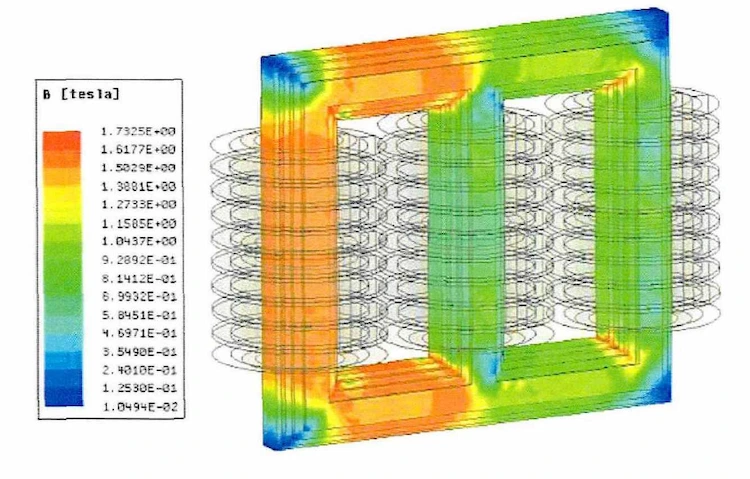
During the operation of the epoxy Cast Resin Dry-type Transformer, the main environmental issue considered was noise pollution.
Due to the continuous increase in the total amount of electricity used in life and production, small and medium capacity transformers can be seen everywhere in residential communities. The noise problem generated by the transformer during operation affects people’s living standards on the one hand, and on the performance of the transformer on the other hand. Influence.
For this reason, in the manufacturing process of transformers, manufacturers have successively carried out effective research on noise problems.
Studies have shown that the source of noise hazards caused by transformers is mainly divided into two parts, one is the noise generated by the vibration of the transformer itself, and the other is the noise generated by the vibration of the cooling device.
The main factors of dry-type transformer noise can be summarized as follows:
1) The influence of the expansion coefficient of the silicon steel material used in the core, the size of the expansion coefficient of the silicon steel material is positively correlated with the vibration of the transformer itself.
Therefore, in the manufacturing process of the epoxy Cast Resin Dry-type Transformer, a silicon steel material with a small expansion coefficient is used as the core, which greatly reduces the noise hazard caused by its own vibration during the operation of the dry-type transformer;
2) The shape and size of the iron core and its weight. The shape of the iron core can produce a certain amount of vibration during excitation. For this reason, how to reduce this kind of vibration and realize the optimization method is also an important aspect pursued by the epoxy Cast Resin Dry-type Transformer. ;
3) Resonance influence. In general, the noise problem generated during the operation of dry-type transformers can be optimized through simulation and experimentation in the manufacturing process, so that the dry-type transformer can meet the market’s standards for dry-type transformer noise. ,As shown in table 2.
| Transformers of different capacities and their sound power requirements | ||||||||||
| Capacity (kVA) | 100 | 250 | 500 | 800 | 1000 | 1250 | 1600 | 2000 | 2500 | 4000 |
| Sound power (dBA) | 65 | 67 | 70 | 72 | 72 | 74 | 75 | 77 | 78 | 84 |
In the current world dry-type transformer market, there are two types of cast resin dry type transformers (CRDT) represented by Europe and varnished dry-type transformers (OVD T) represented by the United States.
The high-voltage winding of Cast Resin Dry-type Transformer adopts a special segmented cylindrical structure, which is developed on the basis of ordinary segmented cylindrical windings.
The ordinary segmented cylindrical type not only inherits the advantages of cylindrical windings in impact resistance, but also solves the contradiction of the high voltage between cylindrical windings. It is a relatively ideal winding structure, which is often referred to as non-resonant type. Winding structure.
After the winding of the Cast Resin Dry-type Transformer is completed, it is poured with pure resin in a vacuum state without any filler, so that the flowability of the resin does not decrease.
And because the winding is made of wire, the resin can completely penetrate the winding no matter from the axial direction or the radial direction of the winding, and there are no bubbles inside.
After the winding is dried and cured, the solid insulation composed of resin and glass fiber not only has good impact resistance, but also has a small amount of partial discharge.
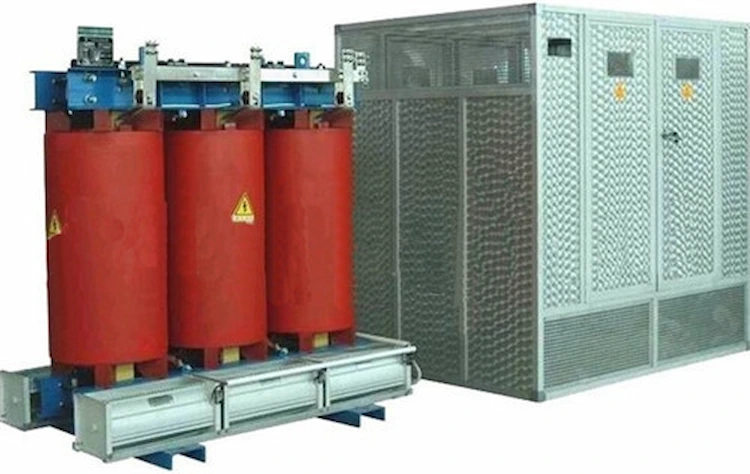
For the wire-wound segmented cylindrical type, after vacuum pouring, the layer, turn, and segment of the winding can be impregnated with resin at one time.
The high-strength mechanical properties of this structure determine that Cast Resin Dry-type Transformer has good short-circuit resistance.
Because the product is cast with resin for both high and low pressure, and the iron core is also coated with resin, it has strong moisture resistance and corrosion resistance. When the relative humidity of the air is 100%, it can still run for a long time.
Because the coil is vacuum treated and molded, there is no air bubbles between turns and layers, and its partial discharge is the lowest among similar products. In addition, the epoxy Cast Resin Dry-type Transformer has high mechanical strength and will not be affected by short-circuit electromotive force. Deformation, and good dust-proof and anti-fouling performance.
According to the feedback of the application, its operating life is longer than that of OVDT.
In the past, the main problem that affected the operating reliability and life of the epoxy Cast Resin Dry-type Transformer was the cracking of the casting coil.
However, with the adoption of thin insulating glass fiber reinforced structures, the advancement of raw materials and the improvement of casting process, this problem has been better solved.
As mentioned earlier, because the surface of the coil of the OVDT type dry-type transformer is insulated by a thin covering insulation layer after vacuum pressure impregnation (VPI).
Therefore, when this kind of transformer is out of service, it is easy to reduce its insulation level due to moisture absorption, which may cause the partial discharge to increase or even cause serious accidents such as insulation breakdown after being put into operation.
Therefore, for the sake of reliability, when the operation is restarted after a period of outage, the operation must be preheated and dehumidified before it can be put into operation with the load. This will inevitably cause the extension of the operation time after the power outage, which will have a certain impact on the reliability.
However, for epoxy Cast Resin Dry-type Transformer.
Because the Cast Resin Dry-type Transformer has good moisture-proof and dust-proof performance, there is no need for this kind of preheating.
The out-of-service dry-type transformer can be put into operation immediately and run with load according to the needs of the power grid.
For the epoxy Cast Resin Dry-type Transformer, the withstand voltage strength of epoxy resin is much higher than that of air (about 3.5~4 times). Its coil is encapsulated by a 2mm resin layer. Under the same insulation level, The section insulation distance, main air duct distance, and the insulation distance between the cakes of the OVDT dry-type transformer coil are 15% larger than that of the epoxy cast dry.
Therefore, under the same withstand voltage insulation level and size conditions, according to the comparison calculation analysis and test verification between the SC9 and SC10 series and the OVDT dry-type transformer series, the loss of the OVDT series dry-type transformer is 15 larger than that of the epoxy Cast Resin Dry-type Transformer. ~20%.
On the other hand, under the same insulation level and size, the same insulation level (Class H), due to the low rated loss and low-temperature rise of the epoxy Cast Resin Dry-type Transformer, has the advantages of energy saving and environmental protection.
At the same time, due to the low-rated temperature rise, its overload capacity is strong.
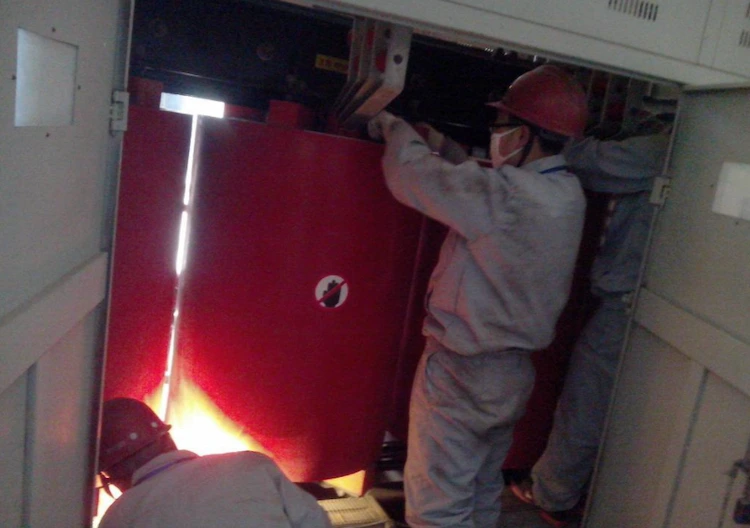
When the epoxy Cast Resin Dry-type Transformer fails and cannot work normally, the epoxy Cast Resin Dry-type Transformer should be recycled as a whole in time.
In recycling, two factors must be considered:
First of all, the production and sales manufacturers must perform uniform numbering of the transformers, and carry out more systematic statistics on the environment in which the transformers are applied, so that certain feedback information can be obtained on the operating conditions of the transformers, and comprehensive management from production to operation status can be achieved;
Second, if the epoxy Cast Resin Dry-type Transformer fails or even fails to work normally, the transformer must be recycled in time.
The recycling of epoxy Cast Resin Dry-type Transformer should take into account the nature of the constituent materials. For electromagnetic materials, copper and aluminum can be completely recycled and reconstituted as copper and aluminum products;
Inorganic materials such as quartz can be used as building materials for recycling, and some materials that do not produce toxic gases can be used for power generation, etc.;
Specifically, different materials are applied to different occasions, turning waste into treasure to reduce the harm to the environment of the discarded epoxy Cast Resin Dry-type Transformer to the lowest level.
In the insulation system of power equipment, when the electric field strength of a local area reaches the breakdown field strength of the medium in that area, the discharge will occur in this area.
However, the discharge does not penetrate between the two conductors to which voltage is applied, that is, the entire insulation system does not break down. This phenomenon is called partial discharge.
What happens in the insulator is called internal partial discharge;
What happens on the surface of the insulator is called surface partial discharge;
It occurs at the edge of the conductor and the surrounding is gas, which is called corona discharge.
The electric field strength of various parts of the transformer insulation system is often uneven. Partial discharge is generally caused by uneven electric field inside or on the insulating surface, and the local electric field is particularly concentrated.
At the same time, the insulation medium of some parts of the transformer is different or uneven, and the insulation has weak points.
If the local field strength exceeds the discharge starting voltage and there are free electrons, electron avalanche will occur.
There are many situations that cause uneven electric field or electric field distortion: The electrode system of power equipment is asymmetrical, such as the high-voltage outlet end of the transformer, the tap terminal and other places where the electric field is concentrated;
The medium is not uniform, or the insulator contains bubbles, forming a composite medium. Under an alternating electric field, the electric field strength in the medium is inversely proportional to the dielectric constant, and the electric field strength in the medium with a small dielectric constant is higher than that with a large dielectric constant;
If there is a higher floating potential, poor electrical connection, etc., it will also cause local field strength distortion.
During partial discharge, the high-energy charged particles and the insulating medium affect each other, which may eventually lead to the breaking of the chemical bonds of the molecules, the change of chemical properties, burning candles, destroying insulating materials, and causing electrical aging.
Slight partial discharge has little effect on the insulation of power equipment, and the decrease in insulation strength is slower;
The strong partial discharge will cause the dielectric strength to drop rapidly, and the discharge area will continue to expand, eventually leading to the breakdown of the entire insulator.
The partial discharge will affect the insulation life of power equipment, and some may even cause serious short-circuit burnout failures in a short period of time.
Based on the analysis of the causes of partial discharge in epoxy Cast Resin Dry-type Transformer, and formulating corresponding control measures, the probability and impact of partial discharge can be reduced to a large extent.
The insulation system adopted by each manufacturer is different, the design and process specifications developed are different, and the principled method can be used as a reference. The recommended control measures are as follows:
(1) In terms of product design, based on the company’s fully tested, verified and stable and reliable insulation system, balance performance and cost factors, formulate reasonable design specifications.
Clarify the selected insulation structure, inter-layer voltage, inter-layer insulation thickness, inter-section voltage, inter-section distance, main insulation distance and inter-phase distance and other parameters, and strictly refer to them during design.
For special working conditions, the design should be treated differently. For example, the temperature rise of photovoltaic power generation transformers needs to consider the actual temperature of the project location.
(2) In terms of raw materials, winding insulation materials are managed and controlled as Class A materials.
From the development and verification of insulation materials, the introduction and quality supervision of new suppliers, and the complete inspection of materials in the factory, all aspects are strictly regulated and managed to ensure the reliability and stability of the quality of insulation materials.
(3) The winding winding and pouring process, as the core process of transformer manufacturing, is also a special process. It is necessary to formulate process specifications through strict tests and operation verification, and clarify the operation methods and technical requirements of each step.
Strengthen staff training and qualification confirmation, and pay attention to the status management of casting equipment.
For transformers used in severely humid environments, a layer of hydrophobic RTV (Room Temperature Vulcanized Silicone Rubber) coating is sprayed on the winding surface, which can significantly improve the moisture resistance.
It is very necessary to focus on ensuring the quality level of windings.
(4) Attention should be paid to the process details during the transformer assembly process to ensure the insulation distance required by the design drawings. The electrical connection should be specified with a torque standard and tightened with a torque wrench.
Clear inspection methods to ensure that each bolt is fastened, the edges of the parts are as round as possible and polished smoothly, the metal fastening parts are reliably grounded, and the oil stains on the body of the device are cleaned after assembly.
(5) Epoxy Cast Resin Dry-type Transformer is used in various working conditions, and under good environment and stable operation, such as civil distribution transformers, the operation is generally very stable and reliable.
However, in some special working conditions, for example, photovoltaic power generation may have to deal with high temperature and summer weather, onshore wind power may have to deal with humid and extremely cold weather, and offshore wind power may have to deal with salt spray environments.
Some conditions have exceeded the long-term environmental conditions of epoxy Cast Resin Dry-type Transformer, which can easily lead to surface discharge or internal discharge, which may cause serious accidents.
Only relying on the performance of epoxy Cast Resin Dry-type Transformer itself is difficult to adapt to harsh environments, and attention should be paid to the installation and operation process control of the transformer.
For example, the system structure should be designed to avoid rain, snow or other solutions from falling on the windings;
Prevent dust such as generator carbon brush powder from sticking to the winding surface;
Lightning protection measures should be strengthened in areas with heavy mines;
In high humidity or cold environments, install heaters in the transformer room as much as possible to avoid power transmission in humid or extremely low temperatures after the transformer is out of service;
In addition, it is necessary to strengthen the regular inspection, maintenance, and hidden danger investigation of transformers.
Wiring method of Dry-type Transformer
-Introduced the common wiring methods of dry-type transformers, how to connect the input and output terminals of the transformer, and what are the low-voltage outlet methods of dry-type transformers.
Detailed explanation of the difference between dry-type transformers and oil-immersed transformers
-This article will compare the difference between dry-type transformers and oil-immersed transformers in terms of price, model, application.
Dry-type Transformer Model List
-What are the models of dry-type transformers, the product models of dry-type transformers and their alphabetical order and meaning.
What is The Alarm Temperature of The Dry-type Transformer?
-Introduced the dry-type transformer temperature standards, mainly including the temperature of the dry-type transformer’s coil, the temperature of the iron core, metal parts, and adjacent materials, and what is the alarm temperature of the dry-type transformer.
After filling in the contact information, you can download the PDF.